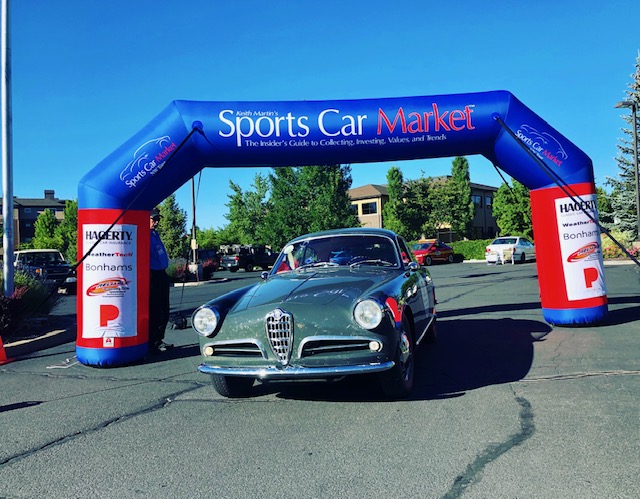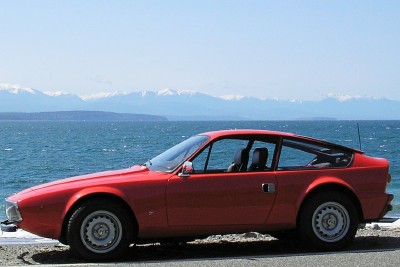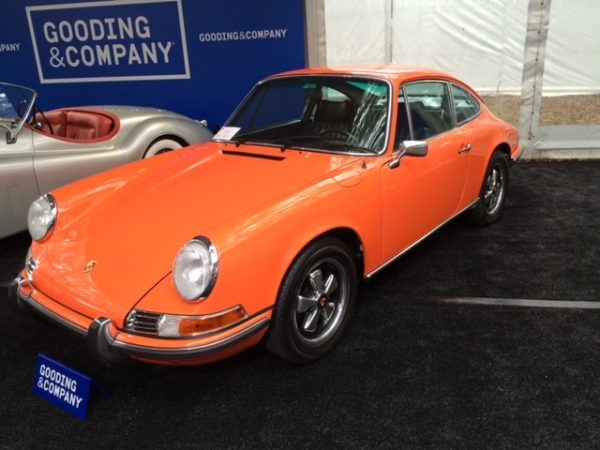
I’ve been having a back-and-forth discussion with SCM Contributor Jim Schrager (my long-time mentor) about upgrading engines in vintage cars.
This started when I mentioned to him that I was confused about 911 restorations. I see so many ads for early 911s that blather on and on about $250k restorations and then add, “by the way we upgraded the engine from 2.0 to 2.4 liters.”
I’ve never thought of myself as a purist, but I like things to be correct. Many years ago, I owned a 1968 911L (with the dreaded side-markers). It had the S-gauge package and a five-speed. I found the performance delightful with its stock 2.0-L engine. I drove it on the 1,000-mile Northwest Classic Rally. It had more power than my four-cylinder Alfa Giulia Spider Veloce, certainly enough to go as fast as I wanted to on a public road.
I also recall how free-revving it was. It reminded me of the 750-series Alfa Veloce motors, which seemed to have no discernable redline. They just kept spinning faster and faster the more you fed them fuel.
I have noted before that while I would not change out the engine in an Alfa to a larger one, I have enjoyed buying Alfas that someone else has already modified — all of the pleasure and none of the guilt.
The “modificatos” I have owned include a Giulia Super with a 2.0-L replacing the original 1.6, and a 1967 GTV similarly upgraded to a 1750.
Did the larger engines make the cars “better?” No, they made them different.
Good friend and AROO club president Chris Bright has a later-model Super with its original twin-Weber 1.3-L engine.
I recently rode with him on a 300-mile one-day tour to the coast and back.
Yes, he had row through the gears from 5th down to 3rd on some hills, but isn’t that why we like manual gearboxes?
Schrager explained that he values cars that are prepared to their original specs. It’s also important that the drivetrains and suspensions be up to snuff. It’s no fun to drive an old car with a crappy suspension or badly tuned carbs.
If we are going to all the trouble to own old cars, then we owe it to ourselves to have all the systems working as well as they would have in the first years of the car’s life.
I’ve decided that I’m with Jim. Given a choice, I would always prefer a smaller-displacement original motor over a later “upgrade.” Original motor cars may be harder to drive and you have to work to get them to perform, but they have their own unmistakable essence.
None of us are racing these cars; we are taking them out for tours on public highways at reasonable speeds. How they were born will let you go fast enough.
Before you drop six figures on your next 911 restoration, I present a challenge to you, to accept your car for what it was, as-built. Are you a mature and self-confident enough collector to let it teach you what Porsche was up to in-period? Or does your ego need to be stroked by being able to brag that you have “upgraded your motor.”
You may go faster, but your car is no longer a time machine.
These machines were awfully good when new. I advocate teaching yourself how to appreciate them before “improving them” and ruining their essence.
What’s your opinion? If you were restoring a 2.0-L 911, would upgrade the engine? And if you were building a 1967 Duetto, would you replace the original 1.6-L engine with a 2.0?
I look forward to your thoughts.



Most cars that we’re interested in were fine when they were designed and built. The engineers at companies like Porsche, Mercedes, Alfa, etc all knew what they were doing. I’m with you on most cars.
An exception would be 190SL Mercedes. They were slow and dull when made, and their performance was in sad contrast to their looks, which echoed the 300SL (NOT slow by any means) The factory did build a few 190SLs powered by the 2.2 liter six, but dropped that idea in favor of a totally new car, teh 230SL, thus beginning the 113 series.
More than likely, someone has put a proper better Mercedes engine into a 190SL, removing its pitiful 3-main-bearing four. Most vintage cars are fine as is, as you point out. But appreciating a 190SL for what it is means resigning yourself to having your doors blown off by anything quicker than a loaded dump truck.
There is another option to such a dilemma, Keith, along the lines of Jim’s suggestion. if you can think of such a change in terms of just making your Alfa more fun for you to drive, about R&R the less enjoyable OEM engine with the more powerful later one and store the OEM one in your garage? That way, the next owner(s) can decide whether to return it to original specs or have more fun driving it (i.e., pass your dilemma along with the car).
With all due respect, I don’t think it’s a question of maturity vs. ego. Sometimes practicality plays a role. I have a 1970 Alfa Giulia 1300TI that received a 2.0 liter transplant before I purchased it. It’s easier to get parts for the 2.0. When I needed a new cylinder head last summer, I was able to source one for the 2.0 pretty quickly. I don’t think that would have been the case for the 1300. I also use the car for long drives (we met at the AROC convention in Olympia after I drove out from MN) and the 2.0 with an upgraded 4.10 makes it much more relaxed on the highway. A counter argument might be why did Alfa, Porsche, etc. evolve to larger engines if they weren’t an improvement? We’re not talking an LS swap here, just a switch to a slightly newer / larger motor in many cases. Not sure I would have made the switch myself but I can definitely see the pluses and minuses. And I have my Alfas to use them, not impress others with the displacement. If you’re having fun, who cares?
I can understand both sides of the argument, but have to agree with Keith ultimately. My 1750GTV can sit on 75/80mph all day, as fast as you need to go in reality and I’m not going to race it. Even on the odd trackday I can go fast enough to scare myself. I don’t get the ‘twinspark’ upgrade that people do as a big part of the character of the car to me is how much ahead of the average car it was in it’s day dynamically and if I wanted to drive a modern fuel injected thing, then I would have modern fuel injected car…
I’m an old hot rodder, turned sporty car guy. I love to make cars exactly to my vision. I had a 1968 Mercedes coupe a few years ago, low mileage, but, it had a 4:10 rear end, I had to shift before I got through an intersection! I bought a crappy old V 8 sedan, swapped to its 3:25 ratio rear and the car was perfect.
I have a Lancia Fulvia on BAT auction this week, it has a Subaru drivetrain, it’s fast. I really wanted an overdrive 5 speed, and the 90 HP engine was not going to be enough for driving at high altitude, I do one or more 1000 mi. mountain rallies with my wife every year, the idea of chasing everyone at 4000 plus rpm did not appeal.
So its not always about more power, it’s the overall driving experience I try to achieve.
By the way, Gordon Murray had a ’70s Ford Escort turned into a restomod a couple years ago for the same reasoning, done by a very professional shop called Retropower in England.
I also have a 1970 911T, has the outlaw look, but stock except for Webers, i love it just the way it is, but, if engine goes bad, I might upgrade to a 2.7 from the 2.2 L, just because, no good reason!
Keiths and all these comments are valid but ignore the fact that in yon times, cars in Europe were taxed relative to theit engine capacity. This resulted in manufacturers confining their engine selections for the sake of sales.
I’m absolutely split on this. I’m nearing completion of a 51 XK 120, that I intend to drive a great deal. Clearly the 3.4 and the Moss 4 speed would do the trick, but neither was in condition where restoration was an option. So, I found a 4.2 and installed a Tremec 5 speed. The 4.2 is out of a sedan, and we’ve used a mildly hotter cam. The 3.4’s were harder to find, and I’m also focused on reliability, and ease of use. I want to enjoy driving this car on some of the Southern California roads that I frequent on motorcycles, and actually, this is the beginning of my transition from motorcycles to cars as I confront the realities of aging. On the other hand, many of the cars and motorcycles I have really enjoyed have been because they do so well what they were designed to do, including even enjoying driving my old Volkswagen bus and my Dad’s model A. So, my view is “whatever floats your boat”.
Man, I’m torn on this. I recently bought back the 1974 Pontiac Formula 400 4-speed I had originally purchased in 1998 as a college-graduation present to myself. The suspension was shot. I had my mechanic install a Ridetech Streetgrip suspension instead of overhauling the original suspension. I’ve driven the car, and like the new suspension, but I’m still not sure I did the right thing. I may never know what a 1974 F-body handles like on a new, original suspension.
As to swapping engines for ones with more power, I can see how that might make some of these older cars less scary to drive in modern traffic. But then, again, you may lose the essence of what the car was originally. Ideally, have one of each, stock and modified… 🙂
Many readers are old enough to remember this:
It’s got a Lincoln motor
And it’s really souped up.
And that model A body makes it look like a pup
It’s got eight cylinders; uses them all.
It’s got overdrive, just won’t stall.
With a 4-barrel carb and a dual exhaust,
With 4.11 gears
You can really get lost.
Once you’ve swapped the engine, a few interior changes and a little discreet body modification don’t seem too egregious. And then, you’re halfway down the slippery slope.
To each his own.
It’s got safety tubes, But I ain’t scared, brakes are good, tires fair.
Come out of San Pedro late one night, Moon and Stars was shining bright. We was winding up that Grapevine Hill passing cars like they was standing still. ….
I still love Commander Cody 50 years later….
Leave the Alfa alone – mess with the Porsche!!
“If you were restoring a 2.0-L 911, would upgrade the engine? And if you were building a 1967 Duetto, would you replace the original 1.6-L engine with a 2.0?”
No, no and no.
my 1300 junior z would cruise at 90 just fine on a flat road–that was at the limit of the hand throttle travel!
Not all cars were/are tolerable. I test drove a Mercedes 190D Heckflosse with an automatic transmission that was on a Chrysler dealer’s lot 10 years ago. It was AWFUL. I didn’t know they made cars that slow. Anything you could transplant into it would be an improvement!
But, I generally agree with Keith et al. I think my 2 Citroen DS21s (one a 4 spd with clutch, one a Citromatic) and my 1987 Porsche 911 cabriolet (with G50) are both wonderful in their original state.
Some “upgrades” are made for convenience, because that (later) part may be more available, other upgrades are made for “improvement”. Any change that contributes to making an old car run better at 75 (or faster) in today’s traffic is welcome. I hate nursing an old car along in the slow lane forever. Thank God my ’55 Chevy has the high speed rear end. Even in San Francisco, we have to use the freeway to get to car heaven in Wine or Beach or Gold Country. That’s why my 2002 got a 5 speed and my 220S got Webers. Invisible upgrades are welcome, of course if a period correct supercharger was available for either car, similar to the MBZ 190SL mentioned before, maybe I would have done that. To each his own, as someone said, above. Just keep the old parts in case someone wants to put it back to original. RIP Jeff Beck, car guy.